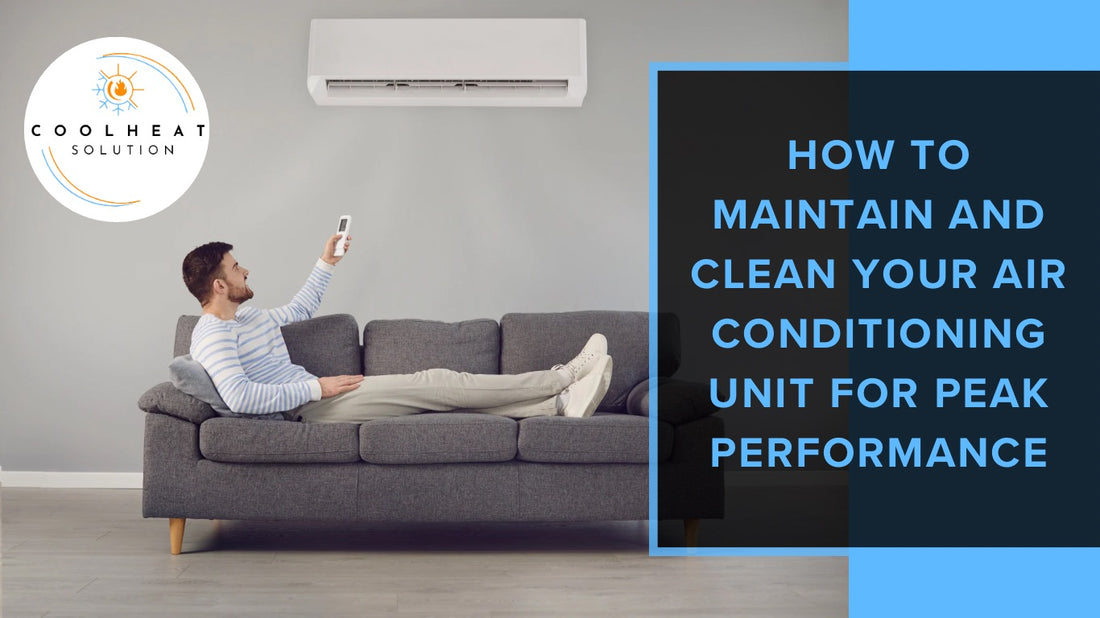
How to Maintain and Clean Your Air Conditioning Unit for Peak Performance
Share
Your air conditioning unit is a vital part of keeping your home comfortable year-round, especially during those hot summer months. Whether you have a portable air conditioner or a wall-mounted system, regular maintenance and cleaning are essential to keep it running efficiently. Neglecting this can lead to higher energy bills, poor cooling performance, and even costly repairs.
In this guide, we’ll go over practical tips on how to maintain and clean your air conditioning unit, ensuring it operates at peak performance for years to come.
Why Regular Maintenance is Important
Before diving into the practical tips, let’s first understand why maintenance is crucial:
- Improved Efficiency: A clean and well-maintained AC unit will cool your home more effectively, saving energy and reducing operating costs.
- Extended Lifespan: Regular maintenance helps prevent wear and tear, extending the lifespan of your air conditioner.
- Better Air Quality: Dirty filters and components can circulate dust, allergens, and pollutants through your home, negatively impacting air quality.
- Prevents Costly Repairs: Catching small issues early through routine maintenance can prevent them from turning into expensive repairs down the line.
1. Clean or Replace the Filters Regularly
Both portable and wall-mounted air conditioners have filters that trap dust, dirt, and allergens. Over time, these filters can become clogged, reducing airflow and forcing your unit to work harder than necessary. This not only decreases efficiency but can also lead to overheating.
- For Portable AC Units: The filter is usually easy to access. Remove it and either vacuum the dust away or rinse it under cool water. Let it dry completely before reinserting it.
- For Wall-Mounted Systems: The filters in wall-mounted units can also be removed and washed. It's recommended to clean them once a month during peak usage periods. If your unit has a replaceable filter, change it every 3-6 months, depending on the manufacturer's instructions.
2. Clean the Evaporator and Condenser Coils
Over time, dust and dirt can accumulate on the evaporator and condenser coils of your air conditioning unit, which reduces their ability to absorb and release heat effectively. Cleaning these coils will help your system cool more efficiently.
- Portable Units: Disconnect the unit and remove the outer casing to access the coils. Use a soft brush or vacuum to gently clean the dirt off the coils.
- Wall-Mounted Systems: Turn off the power to the unit before cleaning. You can use a coil cleaning spray (available at most hardware stores) to remove dirt and debris from the coils. This should be done at least once a year for best results.
3. Check the Condensate Drain
Air conditioners remove humidity from the air, which results in water collecting in the condensate drain. If the drain becomes clogged, it can cause water damage to your unit or even lead to mold growth.
- Portable AC Units: Check the condensate tank regularly. Most portable air conditioners have an indicator light that will tell you when it’s full. Empty the tank and clean it out to prevent bacteria buildup.
- Wall-Mounted Systems: Ensure that the drain line is free from blockages. You can flush the line with a mix of water and vinegar to clear any obstructions and prevent algae growth.
4. Inspect and Clean the Fan Blades
The fan inside your air conditioning unit helps circulate air throughout your space. Over time, the fan blades can accumulate dust and dirt, leading to decreased performance.
- For Both Portable and Wall-Mounted Units: Turn off the unit and remove the protective grille to access the fan. Use a soft, damp cloth to wipe down the blades. Ensure the fan is dry before reassembling the unit.
5. Keep the Area Around Your Unit Clear
- For wall-mounted air conditioners ensure there’s at least 2 feet of clearance around the outdoor condenser unit. Remove any leaves, debris, or overgrown plants that might obstruct airflow.
- Portable air conditioners should be positioned with adequate space around them as well. Make sure nothing is blocking the intake or exhaust vent to allow for proper air circulation.
6. Check the Thermostat Settings
To maintain peak performance, make sure your thermostat is functioning correctly. If you have a smart thermostat, regularly check that the settings are optimised for energy efficiency. For wall-mounted units, set the temperature slightly higher when you’re not at home to reduce energy consumption.
7. Schedule an Annual Professional Inspection
While these DIY tips can help keep your air conditioner running smoothly, it’s always a good idea to have a professional inspection once a year. A technician will be able to spot any potential issues that you may have missed, such as refrigerant levels, electrical connections, or more in-depth cleaning requirements.
By taking the time to care for your system, you’ll enjoy better cooling, lower energy bills, and an extended lifespan for your air conditioner.
Don’t wait for your AC to break down during the hottest part of the year—start a regular maintenance routine today for consistent, efficient performance.
